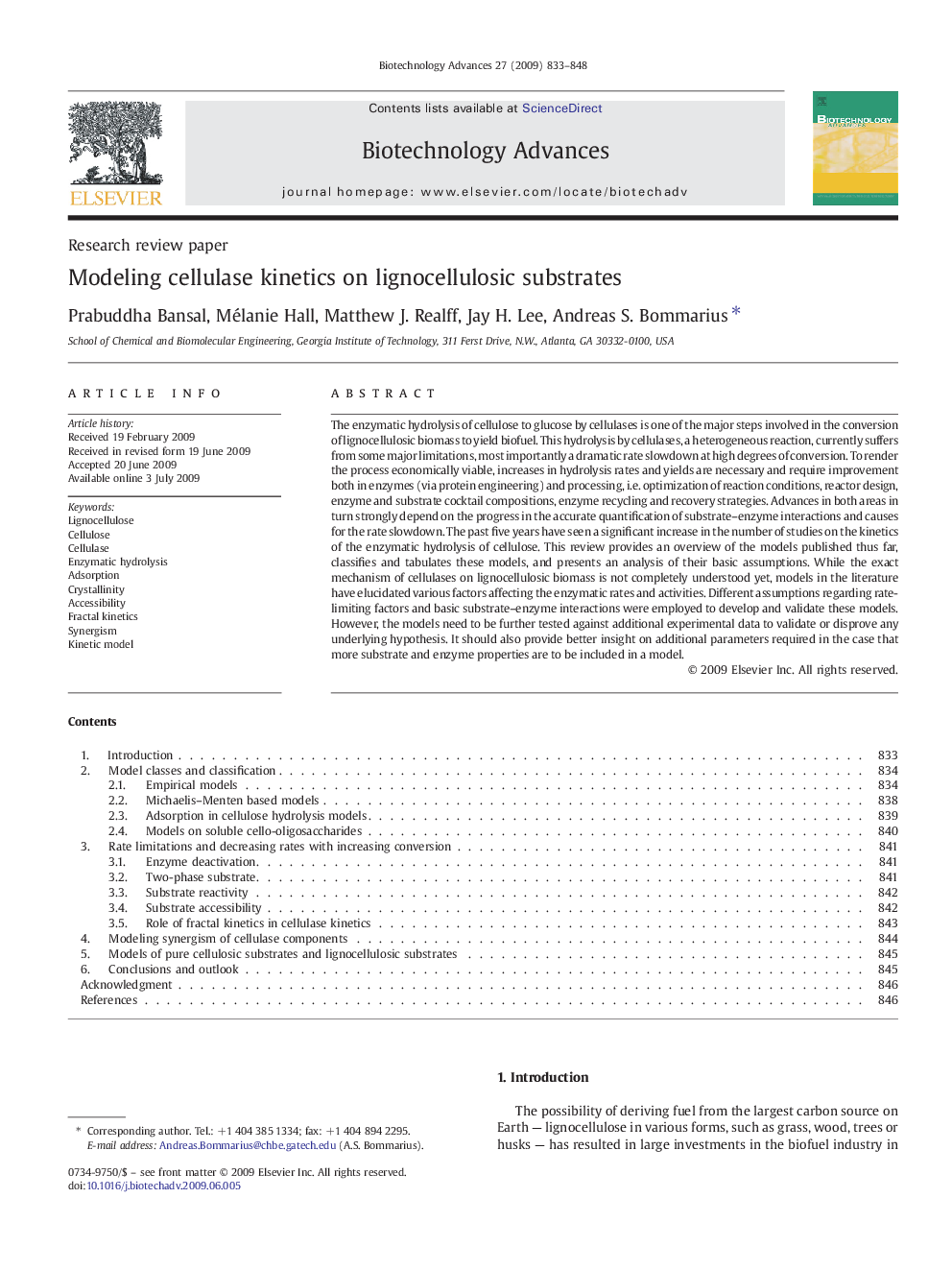| Article ID | Journal | Published Year | Pages | File Type |
|---|---|---|---|---|
| 14655 | Biotechnology Advances | 2009 | 16 Pages |
The enzymatic hydrolysis of cellulose to glucose by cellulases is one of the major steps involved in the conversion of lignocellulosic biomass to yield biofuel. This hydrolysis by cellulases, a heterogeneous reaction, currently suffers from some major limitations, most importantly a dramatic rate slowdown at high degrees of conversion. To render the process economically viable, increases in hydrolysis rates and yields are necessary and require improvement both in enzymes (via protein engineering) and processing, i.e. optimization of reaction conditions, reactor design, enzyme and substrate cocktail compositions, enzyme recycling and recovery strategies. Advances in both areas in turn strongly depend on the progress in the accurate quantification of substrate–enzyme interactions and causes for the rate slowdown. The past five years have seen a significant increase in the number of studies on the kinetics of the enzymatic hydrolysis of cellulose. This review provides an overview of the models published thus far, classifies and tabulates these models, and presents an analysis of their basic assumptions. While the exact mechanism of cellulases on lignocellulosic biomass is not completely understood yet, models in the literature have elucidated various factors affecting the enzymatic rates and activities. Different assumptions regarding rate-limiting factors and basic substrate–enzyme interactions were employed to develop and validate these models. However, the models need to be further tested against additional experimental data to validate or disprove any underlying hypothesis. It should also provide better insight on additional parameters required in the case that more substrate and enzyme properties are to be included in a model.
